Last Updated on March 19, 2024 by Jason Tome
How Many Ash Trees Are Found in Maine?
Maine has 3 species of ash trees; white ash, green ash, and black ash. In this post, you’ll learn how to identify and differentiate them.
How To Identify Ash Tree Species From Other Ash Trees
Once you’ve identified that a particular tree is an ash tree the next step is to identify which species of ash tree it is. Each species of ash has unique defining characteristics that separate them from other ash trees. Some characteristics are subtle and some are not so subtle. The characteristics used to identify ash trees are described below.
Characteristics For Identifying Ash Tree Species
Below I’ve listed some helpful characteristics that can be used to help identify ash trees to the species level:
- Habitat
- Height
- Bark
- Leaves
- Buds
- Twigs
- Flowers
- Fruit/Seeds
- Roots
- Native Distribution
1. Black Ash Trees (Fraxinus nigra)
Other Common Names
Black ash is also called brown ash, basket ash, and hoop ash
Key Identifying Characteristics
A key identifying feature of the black ash is the punky/spongy/flaky bark that other ash trees do not have. Age plays a role in how punky and flaky a black ash tree is. So just because it does not look very punky, don’t rule it out from being black ash, use some of the other identification features below as well.
Habitat
Black ash can easily be identified and distinguished from other ash species in a couple of ways. First, it is a wetland species and will almost always be found in wet areas. Black ash likes wetter soil than most ash trees so you will often find it where soils are saturated. It grows in cold regions in forested swamps.
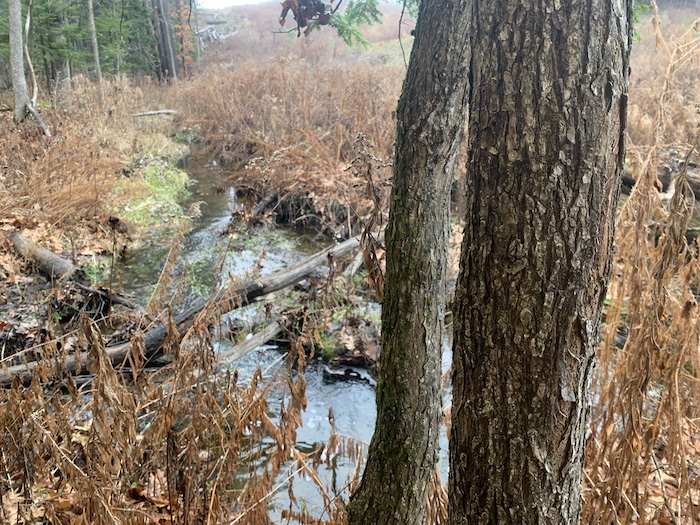
Height
Black ash trees will grow to about 60 ft tall but will have a fairly slender trunk. The trunk will rarely get more than 20 inches in diameter.
Bark
As mentioned above, an identifying feature of the black ash is the punky/spongy/flaky bark that other ash trees do not have. Age plays a role in how punky and flaky a black ash tree is. So just because it does not look very punky, don’t rule it out from being black ash, use some of these other identification features as well.
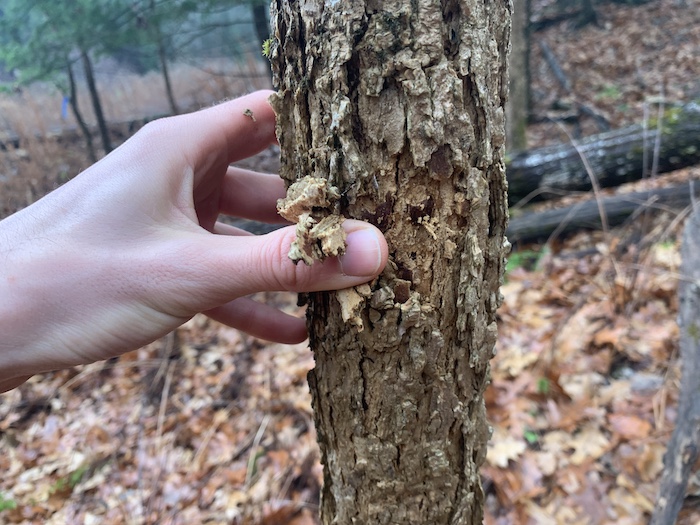
Leaves
The black ash tree typically has between 7-11 leaflets that make up a leaf. The leaf scar is only slightly notched which is more O-Shaped than the white or green ash.
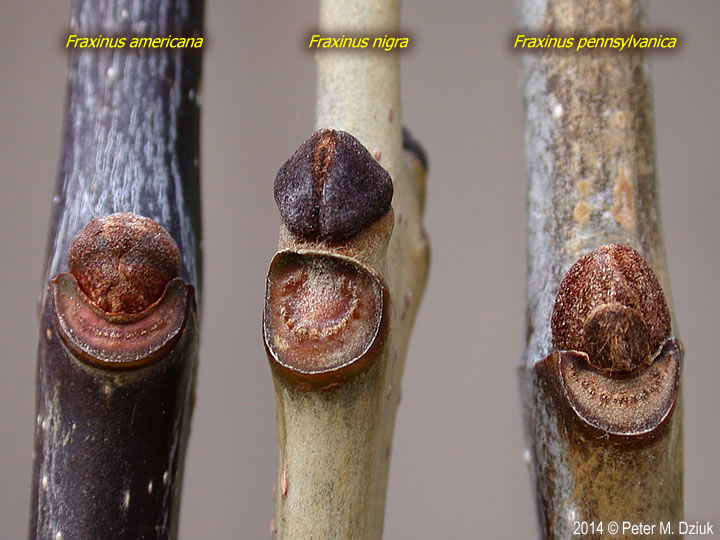

Roots
The roots of the black ash also have white dots/specks on them which other ash trees do not have. I’ve noticed that not all black ash will have obvious white dots, but if you do see them then you can confirm it’s a black ash tree. If you don’t see them use some of these other identifying features.
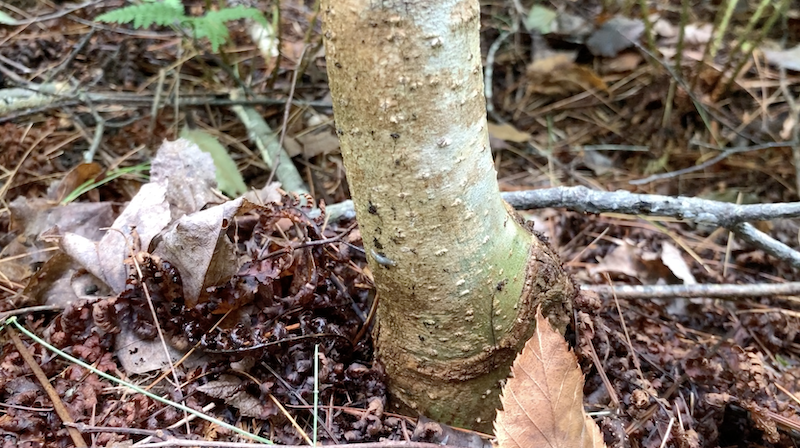
Native Distribution
Black ash occurs in many northeastern U.S. states and in eastern Canada. The northernmost portion of black ash’s range extends from Newfoundland to southeastern Manitoba. Some populations have been observed in North Dakota which is the westernmost distribution. Black ash can be found in all of the Great Lake states the southern limit in northern Virginia.
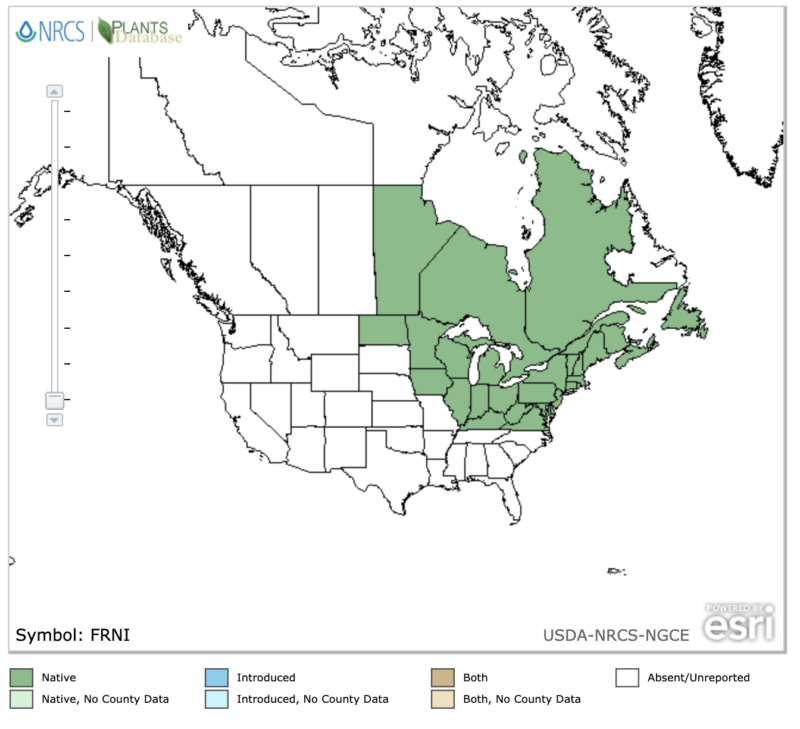
2. Green Ash Trees (Fraxinus pennsylvanica)
Green ash is the most common/widely distributed ash tree species in the United States and is also found commonly in Maine.
Other Common Names
Green ash is also called red ash, swamp ash, and water ash.
Habitat
Green ash can be found in wetlands, along the edges of wetlands, and in upland areas near wetlands in moist soil. Black ash also grows in wetlands but requires very wet soil.
Height
Green ash will grow to about 60 ft tall and will rarely exceed 24 inches in diameter, which is slightly larger than black ash.
Bark
Green ash bark has ridges and furrows. It is less fissured and furrowed than the white ash, but more fissured than the black ash. The ridges form a diamond-like shape. It is not punky/spongy and does not peel as black ash does.
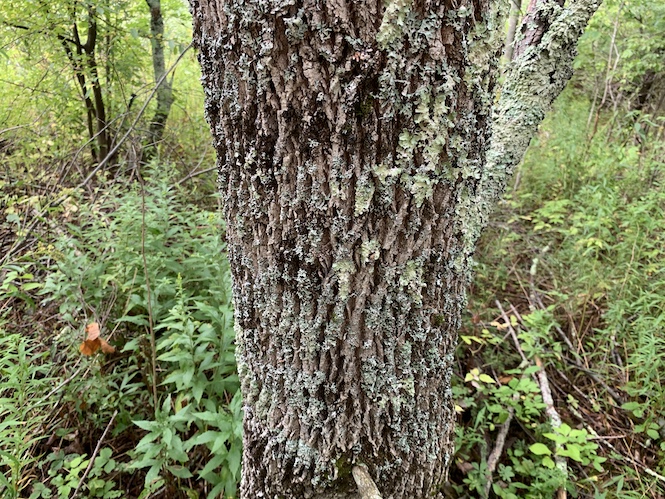
Leaves
Green ash will have 5-9 leaflets that make up an entire leaf. It will most commonly have 7 leaflets. The leaves are 10 to 12 inches in length with individual leaflets 2 to 6 inches long. The leaflets are long-pointed at the tip with a tapering base. The top of the leaf scar is straight and is D-shaped, unlike white ash which has a deep U-Shape.


Native Distribution
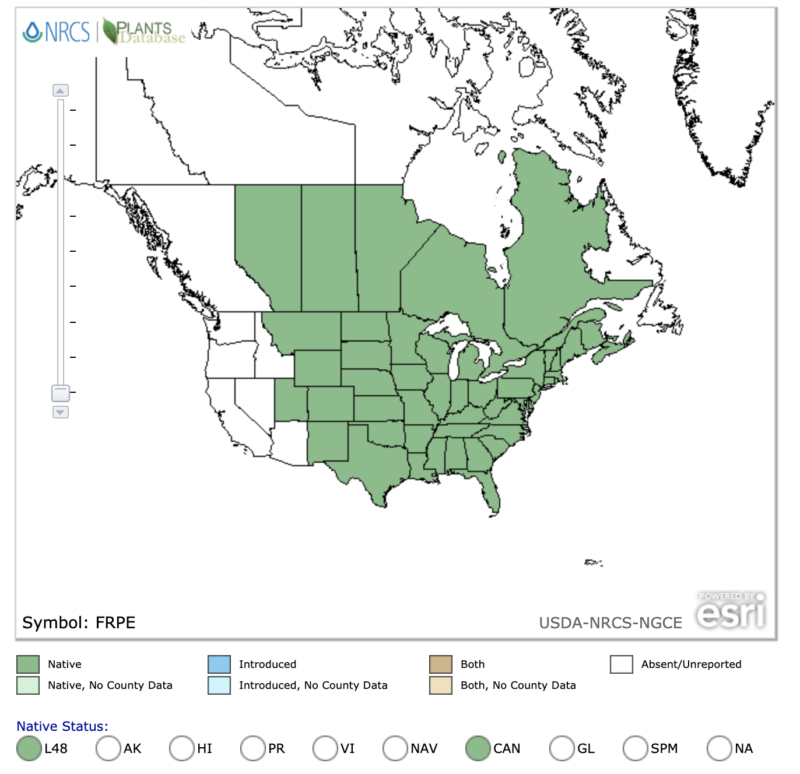
3. White Ash Trees (Fraxinus americana)
White ash is another species of ash that is commonly found in Maine and is widely distributed in the United States.
Other Common Names
White ash is also called purple ash, Biltmore ash, Biltmore white ash, cane ash, small-seed white ash.
Key Identifying Feature
The leaflets have a distinct, ¼ to 1/3-inch slender stalk that often has finely toothed edges, tapering to a pointed tip. The white ash also has a U-Shaped leaf scar notch which is different than the D-shape notch of the green ash, and the slightly notched black ash which is more O-Shaped.

Habitat
White ash trees prefer dry soils and will be found in dryer areas than black and green ash. White ash and green ash can be found close in proximity, however, white ash will be in the dryer soils and green ash will generally inhabit the wetter areas.
Height
This tree can grow to heights of about 120 ft and support a massive trunk to ~80 inches in diameter in optimal growing conditions.
Bark
The bark of the adult white ash is rough and has deep ridges and furrows that form a prominent diamond pattern. The bark looks similar to green ash but the ridges are even more prominent especially when mature as shown in the photo below.
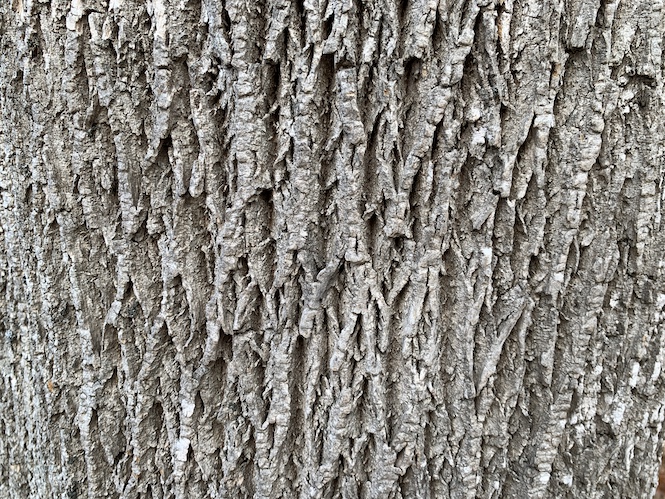
Leaves
White ash leaves are opposite and pinnately compound and are 8 to 12 inches long with 5 to 9 (usually 7) leaflets that are oval to elliptical. Leaflets are 2½ to 5 inches long and 1 to 2 inches wide. Leaflets attached by longer petioles. The base of each leaflet is well-defined. The leaflets have a distinct, ¼ to 1/3 inch slender stalk that often has finely toothed edges, tapering to a pointed tip. The top of the leaves are dark green and smooth, the bottoms are pale green with short hairs along the midvein and at the base of lateral veins.
The white ash also has a U-Shaped leaf scar notch which is different than the D-shape notch of the green ash, and the slightly notched black ash which is more O-Shaped.

Twigs and Buds
White ash twigs are stout with a gray-olive-green color and are hairless.
Flowers
Inconspicuous, meaning they’re not obvious. White ash has separate male and female plants of which their color is light green to purple, both sexes lacking petals. Female flowers occur in loose panicles, males occur in tighter clusters. The flowers appear after the leaves unfold.
Fruit
The fruits are winged samaras like all ash trees and develop in late May to June and mature in the fall. The samaras are one-winged, dry, flattened samara with a full, rounded, seed cavity, maturing in fall and dispersing over winter.
Native Distribution
In the distribution map below you can see that white ash is a widely distributed species and is one of the more common ash species found in the United States.
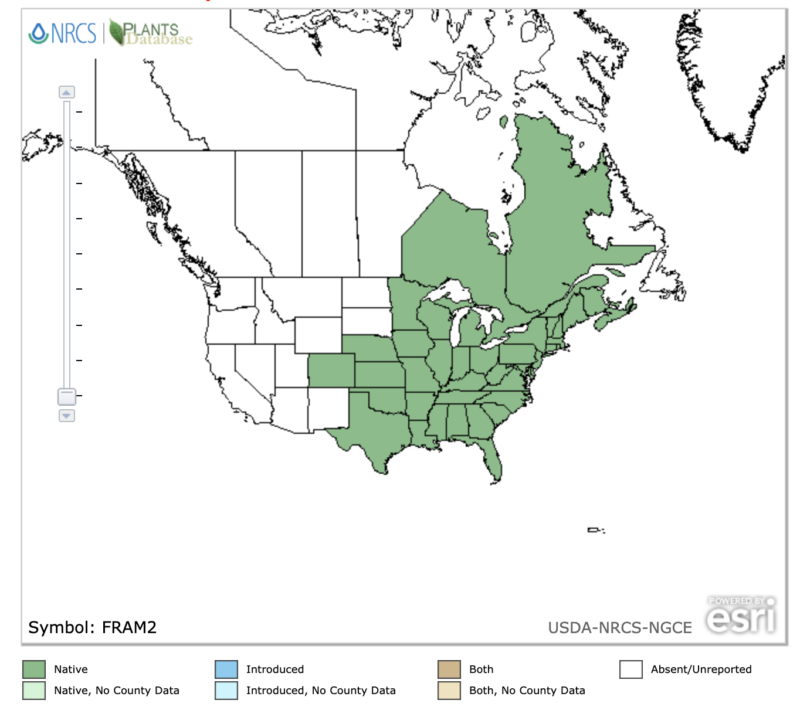
Species Resembling Ash Trees (That Are Not Ash Trees)
By looking at the scientific names of these species you can tell right away that they are not actually true ash species. For example, Fraxinus is not shown in their scientific name, meaning they are not classified as true ash species, despite some of the names having ‘ash’ in them.
- American Mountain Ash Tree (Sorbus americana)
- Not to be confused with Texas ash (which is an ash tree) and is also called mountain ash.
- European Mountain Ash (sorbus aucuparia)
- Boxelder Tree (Acer negundo)
- Shagbark Hickory Tree (Carya ovata)
- Elm Tree (Ulmus species)
- Black Walnut Tree (Juglans nigra)
- Prickly Ash Tree (Zanthoxylum americanum)
Conclusion
Hopefully, you found this Maine ash tree identification guide helpful. If you have questions or comments leave them in the comments below and I will do my best to address them.
For more information on identifying ash trees, check out my other posts:
